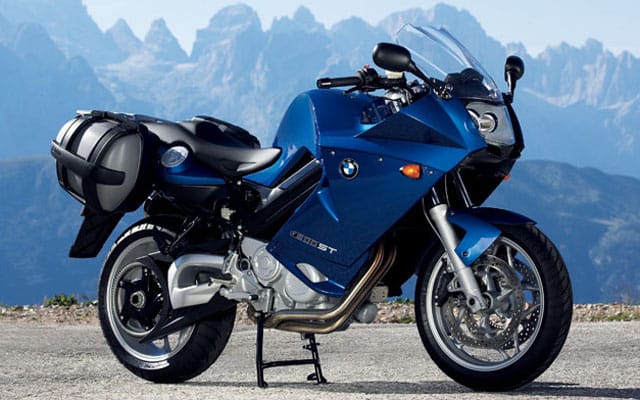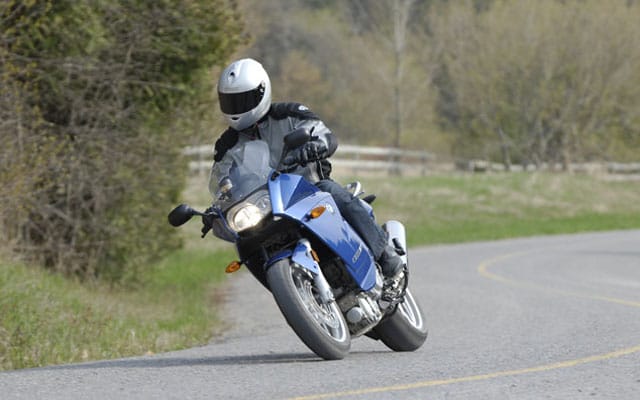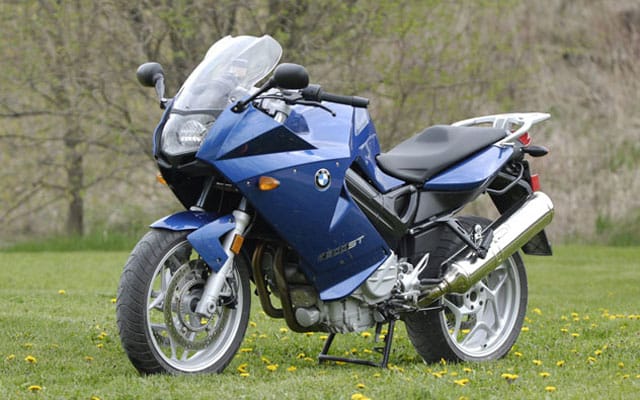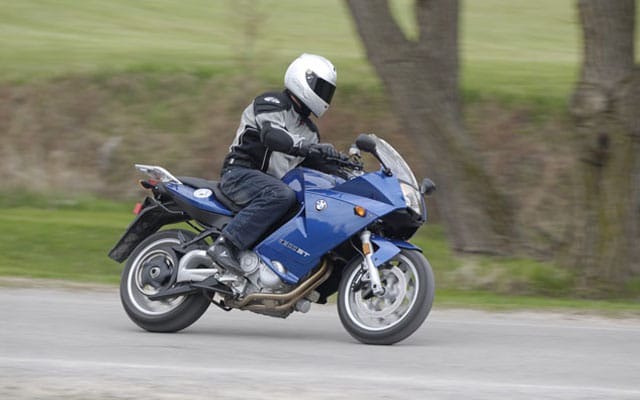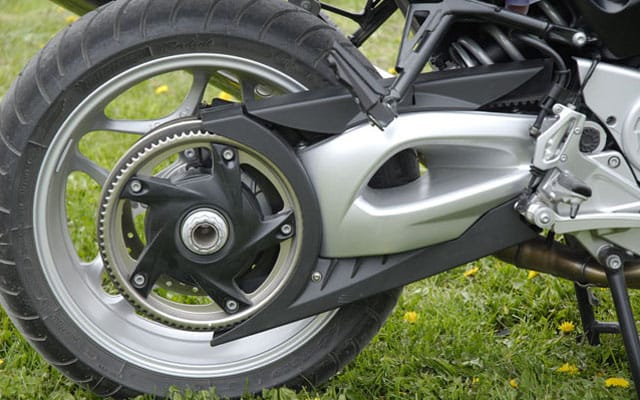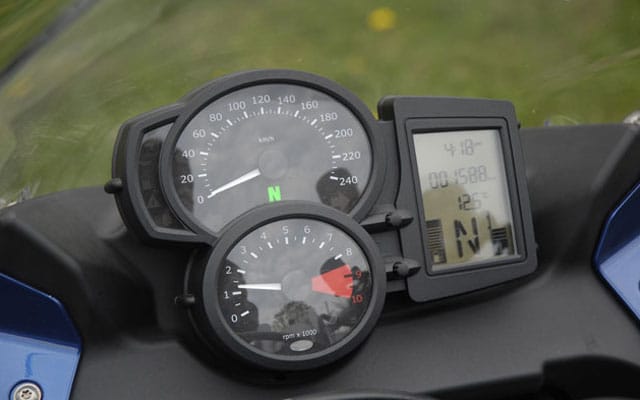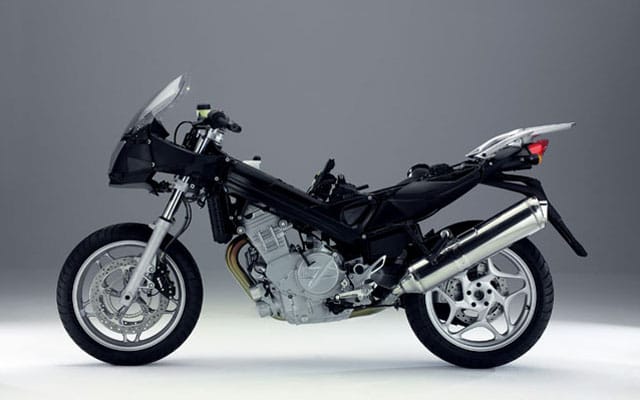BMW introduces an upright twin to go with its singles, flat-twins and inline fours, but the news doesn’t end there; it has ditched the shaft and added an old school telescopic fork—and made one of its best motorcycles ever.
Things don’t always work out as planned. The BMW F800ST that we had arranged to pick up at BMW’s headquarters, just east of Toronto, was shipped to Montreal due to some crossed signals between CC and BMW. Normally this wouldn’t have been an inconvenience, as it’s the home of CC editor Costa Mouzouris, but he was in Europe riding Ducati’s Hypermotard. With a deadline looming and pages reserved for the test, Neil Graham hopped a cheap flight from Toronto and then promptly turned around and rode back home through glorious early summer sunshine on some of eastern Ontario’s finest motorcycle roads. Sometimes unexpected problems make for equally unexpected pleasures.
Much has been made recently of BMW’s attempt to reinvent the brand, as the marketing people say, and the new 800 cc twins are the centrepieces of that makeover. It seemed shocking, when first announced, that the F800S and F800ST would be powered by parallel twins, because even though BMW has singles and fours, the Boxer flat-twin is as much an identifying motif for the brand as
45-degree V-twins are for Harley-Davidson.
The F800 uses a BMW designed and Rotax built twin with BMS-K fuel injection and dual 46 mm throttle bodies, and implements some of the lessons learned on the F650CS singles, including belt final drive and fuel tank beneath the seat. The eight-valve 798 cc engine borrows from the firm’s transversely mounted K-series inline fours, using a similar combustion chamber and port design in its twin-cam cylinder head. Cylinders are canted forward at 30-degrees and the engine is suspended in an aluminum frame that features the latest in sport bike chassis design, with twin spars connecting the steering head and swingarm mount in a nearly straight line. Geometry is set for quick steering with 26-degrees of rake and 95 mm of trail, while wheelbase is 1,466 mm (57.7 in.).
Parallel twins with 360-degree crankshafts inherently vibrate and BMW offers an elegant vibration-cancelling solution. Wanting to avoid the complexity (and noise) of either gear or chain-driven balance shafts, BMW instead added another journal to the middle of the crankshaft, where a third connecting rod is attached to a pivoting weight tuned to cancel primary and secondary vibration. Light buzzing still exists (primarily felt through the pegs and handlebar), but it is of a frequency that doesn’t compromise comfort, and all-day highway cruising is easily sustainable, the engine spinning just 4,000 rpm at an indicated 110 km/h. BMW states its rationale for choosing the
360-degree crank, in part, as wanting to emulate the sound of its Boxer engines, and since Boxers, too, have both pistons at top dead centre at the same time, the two engines do sound alike. It’s not a very stirring sound, though the exhaust note itself is rather robust.
Thankfully, the engine’s power characteristics compensate for its lack of aural pleasure. With bore and stroke measurements of 82 x 75.6 mm, the engine is a relatively long-stroke design and, consequently, quite torquey. The engine can pull top gear from as low as 2,000 rpm, with power coming on nicely at 3,000 rpm and jumping again as the 5,000 rpm threshold is crossed, allowing brisk highway passing without the need to downshift. BMW claims that 90 per cent of the F800’s torque (peak is 63 lb-ft at 5,800 rpm) is available from 5,000 rpm, and peak horsepower of 85 is at 8,000 rpm. But dry numbers do not illustrate how well the engine works on the road, and tightly curving back roads make good use of the F800’s prodigious torque, as it easily to jumps from corner to corner in third gear. The cable-operated clutch is light in effort and the six-speed gearbox shifts flawlessly with barely a nudge at the shift lever.
Its moderate 187 kg (412 lb) dry weight allows it to easily tiptoe between the left and right car tracks to avoid the worst of the degraded pavement, and the smoothness of the fuelling and the snatch-free belt drive (with a lifespan of 40,000 km, according to BMW) allow you to dial on the power without exceeding available traction. Steering is light and the F800 leans confidently, its mass sitting low in the chassis. A steering damper is barely visible beneath the fairing and is unnoticeable when pottering about in a parking lot, while enhancing stability at speed. Cornering clearance is a non-issue, as there’s plenty for even an aggressive street pace.
The relationship between handlebar, footpegs, and seat makes for a near-ideal sport-touring riding position, placing the rider mostly upright. BMW has stated that much effort went into creating a narrow profile at the front of the seat so that legs of modest inseam could reach the ground, while incorporating a broader rear section to allow for greater comfort as the kilometres accumulate. It’s a good idea, and it mostly works, but the rear portion of the seat has a distinct downward slope, so your buttocks end up sliding back down to where the seat meets the dummy tank. Even though the seat may not work as well as intended, comfort is still good and fatigue is safely kept at bay even on lengthy rides. Standard seat height of 820 mm (32.3 in) can be lowered to 790 mm (31.1 in), but unlike some other BMW models that have height-adjustability built into the seat’s base, the F800 must be ordered with the lower seat, which is a no-charge option. Also at no extra charge is an optional factory installed lowering kit (option 499), which includes the lower seat, and revised fork and shock springs, lowering seat height a total 60 mm from stock. Use of this kit deletes the centrestand option.
Cost cutting and weight reduction are two primary reasons that shaft-drive has been eliminated, and the changes continue up front. The Telelever and Duolever front ends of the Boxer twins and K-series fours are gone on the F models, and in their place is a standard non-adjustable telescopic fork of 43 mm diameter. We have commented in the past that BMW, perhaps better than any other manufacturer, understands the balancing act of calibrating sport-touring suspension. Neither soggy nor jarringly firm, we suspected that there were inherent characteristics in the Telelever and Duolever forks that made them especially suitable to the compromise of handling differing road conditions and riding styles. But the good old telescopic fork of the F800ST is equally adept at diffusing the worst of the frost heaves and battered pavement that characterize the best roads in the province, while providing road feel more direct than on the firm’s more complex front ends. Supple but solid, the fork, and by extension the bike, remain composed at a very brisk sport-touring pace. Rear preload and rebound damping knobs are easily accessible from the right side of the bike, and the rear suspension matches the front in composure; it is supple enough for long-term comfort, yet firm enough to handle an elevated pace with ease.
We’re assuming fiscal responsibility also led BMW to abandon the servo-equipped brakes that grace its larger models, but whatever the reason, it’s a welcome change. It isn’t that there is anything defective in the servo system, it’s just that the servo motor, which is added to reduce the lag between the time the rider squeezes the lever and the pads grip the discs, has the unwanted side effect of deadening feel. So while braking power is strong, the lack of sensation at the lever makes it more difficult to sense traction limits with the servo system. By contrast, the conventional system on the F800ST with paired 320 mm rotors and Brembo four-piston calipers is powerful and predictably modulated, though the 265 mm rear rotor and single-piston caliper tends to instigate the optional ABS ($850) frequently, which suggests that the rear brake’s action is overly sensitive.
The $13,000 F800ST tested here differs from the $11,500 F800S in a number of areas. Most obvious is the full fairing on the ST (half fairing for the S) with a taller windshield. The sportier S also has a lower handlebar, differently styled wheels, and no luggage rack. Airflow management is good on the ST, allowing the rider’s helmet to sit in a relatively turbulence-free pocket of air. A peculiarity, however, is the breezy updraft that causes eyes to water, even with a full-face helmet and lowered visor. It remains merely an oddity until we pass through a construction zone, at which point the grit blown up inside our helmets becomes a nuisance. One convenient feature that was overlooked was the inclusion of fairing compartments, which could have occupied the hollow inner fairing panels. Not overlooked are heated handgrips and a standard accessory plug located beneath the right-hand frame spar. Both are useful on a particularly brisk morning, when the thermometer hovers uncomfortably close to the freezing point and a heated vest is called into action. Mirrors, although buzz free, are inadequate, offering a grand view of your hands and requiring you to scrunch your torso out of the way to see rearward. Instruments are nicely displayed and easy to read, and the LCD screen shows time, gear position, engine temperature and fuel level, and a handy optional trip computer ($215) calculates fuel consumption and range on the fly. Based on our manual calculations, fuel consumption is an impressive 4.8 L/100 km (59 mpg). With a 330 km range available from the 16-litre fuel tank, you’re likely to forget on which side to pull up at the gas pump; the filler is unusually located on the right rear side panel.
Glancing through BMW’s brochure for the F800 series, you can see how keen the company is to shed its image as the builder of staid motorcycles for conservative middle-aged men. Irreverent photographs of a man dressed in an alien suit and female bodybuilders striking a pose are interspersed with images of the machines in action, and unless BMW has research that proves that pictures of obscure mascots and flexing women create urges to buy motorcycles, we’re guessing that the point is to show a lighter side. But marketing aside, from the saddle the F800 could only be a BMW. Perhaps what is new about BMW is not the mindset but an engineering flexibility. The F800’s rational design, impeccable road holding, torque-rich twin and, yes, even its sound mark it as a member of the BMW family. And as much as we like Boxers, the new parallel twins are lighter, cheaper and a whole lot easier to bull around a garage or manoeuvre through traffic. Doing more, while weighing and costing less, is a journey that we encourage all manufacturers to take.
From the Saddle
BMWs get better the harder and longer you ride them, and the F800ST was no exception. A pleasure cruise through the country may be pleasant on just about any motorcycle, but when I rode the F800 between Montreal and Toronto it was a long, hard and fast day. A businesslike approach to riding long distances leaves you little tolerance for a machine’s weaknesses and the F800 has very few. A fat midrange meant that I wasn’t behind anyone for long and strong braking backed up by ABS gave me the confidence I needed to out brake a startled sport bike rider.
As motorcycles become more specialized it makes you appreciate bikes like the F800 all the more. It can commute, tour and thrash in a combination as alluring as any motorcycle—and with the optional saddlebags, it’ll pass for a second car.
—Neil Graham
BMW-philes should be outraged. Imagine the nerve of the company, building one of its best twins ever and it’s not a Boxer. Maybe engineers had too many Maß full of beer during Oktoberfest and went against corporate grain by designing a motorcycle that will appeal to a much broader riding public. Characteristic Bimmer quirks are absent, like the sideways twitch when blipping the throttle and scuffed cylinder heads from aggressive cornering. And who can’t appreciate a gearbox that doesn’t clunk when cogs engage?
The F800ST has sophistication and refinement one associates with the Bavarian brand, yet feels and rides like something from Japan—and that’s a very good thing, because this just might be the machine that opens the floodgates to a new breed of customer, one that BMW has been courting as of late: your average Joe.
